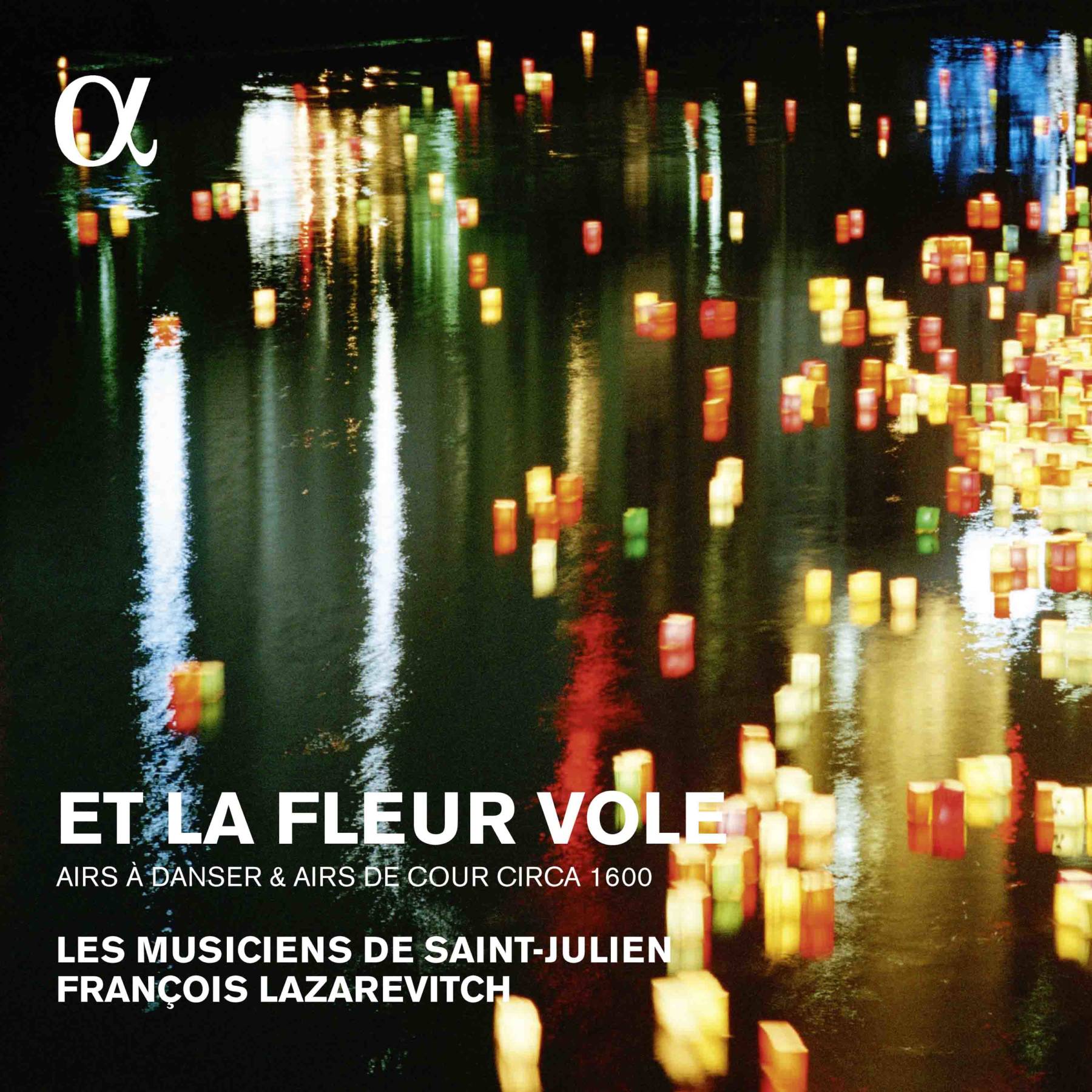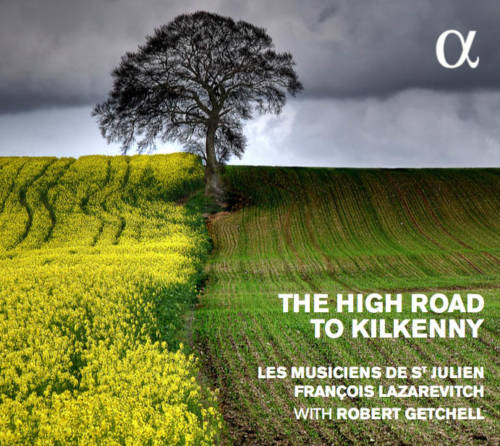Et la fleur vole | réédition
Airs à danser et airs de cour autour de 1600
Tracklisting
- Ballet – La bourrée (4:08)
- Suite de branles: Branles de la cornemuse – Tandis que je m’arreste – Bransles doubles – Bransle de Village (5:16)
- L’œil noir de ma chaste brunette (2:41)
- Spagnoletta (5:40)
- Je voudrois bien ô Cloris (6:05)
- Gaillardes (2:16)
- Bransles de la Grenée – Puisque le ciel veut ainsi (4:07)
- Sortés soupirs témoins de mon martire (6:08)
- Et la fleur vole – Passepiedz de Bretaigne (3:33)
- Si jamais mon ame blessée (2:36)
- Courante – Courante la bergère (2:40)
- Préssé d’ennuis (2:46)
- Si c’est pour mon pucelage – Amour n’a point des ayles (3:59)
- Un jour Amarille et Tircis (4:41)
- Bransles gays – Rosette pour un peu d’absence (4:19)
- J’ay un oiseau qui vole – Ceste beauté supresme – J’estois bien malheureuse (5:02)
Listen to the disc
About
Distribution
Annie Dufresne : soprano
François Lazarevitch : flute, musette & direction
Stéphanie Paulet : violin, viola
Basile Brémaud : violin
Julien Léonard : viola da gamba
André Henrich : theorbo, lute, guitar
Bruno Helstroffer : theorbo, guitar
Patrick Blanc : flute, musette
Philippe Allain-Dupré : flute
Dominique Paris : musette
Pierre Rigopoulos : drums
There are records which revive as if by magic an idea of ancient music where the audacity of prospecting, the freedom of imagination and artistic flair become one.
marc desmet – classica
Press
First edition 2010
january 2011
Classica – Choc
Marc Desmet
There are records which magically revive an idea of ancient music where the audacity of prospecting, the freedom of imagination and artistic flair become one. The Musicians of Saint-Julien trace their own path without being part of a pre-existing trend that is too clearly defined, with the result that the attention paid to every detail makes the smallest piece of the program captivating. With these dances and tunes to dance for years 1600, here we are drawn into a universe halfway between the Renaissance and the Baroque, but probed in its poetic depth, and not in a coldly sampled illustration, or as an advantageous pretext to put into practice recipes already proven otherwise. Neither the tone of the musettes, discreet and delicate, blending as in a dream with the plucked and bowed strings, nor the sparkling melodic friezes of the German flutes with which the musicians grace us offer any comparison with shores already visited on the record. Better yet, the generosity that reigns gives way to pauses, movements of mood and a reality of diction (in a few tunes, superbly sung by Annie Dufresne) which consign a number of discographic “baroque celebrations” to the rank of accessories. At the center of the program, Pierre Guédron’s moving “If ever my soul is wounded” introduces a striking mise en abyme. Deprived of text, the song is projected in an unexpected group of musette and placed at the heart of the project and in a single hearing of its complete harmony, which resembles the keystone of the whole. Very great art.
october 2010
Diapason – Diapason d’or
Philippe Ramin
The beginning of the 17th century saw the continuation of the dance musical forms of the Renaissance but not their aesthetics. Playing the double bransles, the currents, the Passepiedz de Bretaigne or the gaillardes which were then all the rage at the French court, based on the treaties of the end of the 16th century or the beginning of the 18th, involves too many unknowns. And the Dancing Instructions from 1612 rediscovered a few years ago is too obscure to really guide the performer. How, then, can we infuse this music with the life and variety of movement without which it is nothing? By seriously considering their links with certain folklore, François Lazarevitch tells us. We know him as a virtuoso of the musette and, through it, an expert in ornamentation, in everything that contributes to the fluidity of the line: where others systematize the vertical structure of the dance, his Musicians of Saint-Julien organize in complete complicity a more subtle language, favor the inequality of supports, also find the relief of the gesture in the variety of dynamics. The demand and invention of this mixture of genres increase the expressive possibilities (in the broad sense) without falling into the soup of cross over. The beauty of the timbres (violins, viols, plucked strings, traverses and musettes), the skilful alternation of the sublime (Boësset) and the distracting do the rest. We admire Tessier’s court air (Pressé d’ennuies) which Lazarevitch appropriates on the German flute, a little gem of melancholic eloquence. Annie Dufresne’s clear voice bends gracefully to reductions as voluble as those of the musette, and does not forget the pleasure of words. The interlacing of the lutes, the magic of the flutes, the rich vocabulary of constantly renewed rhythmic support, everything contributes to breathing life into the dance repertoire of the end of the Renaissance.
october 2010
Passé des Arts
Jean-Christophe Pucek
[…] Far from the “all-purpose” ensembles, this one undeniably has an assertive and recognizable identity, whose character, both earthy and poetic, brings to its interpretations a very stable foundation and a quivering sensitivity.
september 2010
ClassiqueNews.com
Alban Deags
Touched by an enchanting grace and naturalness, the instrumentalists and singers of Saint-Julien resurrect a whole section of our forgotten musical memory. However, it is a missing link between the Renaissance and the dawn of Baroque which still remains, an unexplored continent, to be reinvested. There was still a need for a deep and articulate gesture and understanding, capable of transmitting between poetry and dancing palpitation, the suggestive vitality… A challenge taken up, – with what poetic finesse and what imagination -, by the collective grouped around François Lazarevitch.
september 2010
blogs.Mollat.com
Francis Lippa
[…] a new marvel from this prodigious enchanter, each time, that is François Lazarevitch, at the head of his generous and madly virtuoso (without pomp!) Musicians of Saint-Julien […] Share the fabulous joy, your turn now! The grace is simply there!
2010
Muse Baroque – Muse d’or
Loïc Chahine
[…] We are not surprised, moreover, as everything seems obvious: The varied timbres – flutes, haversacks, violin, lute, theorbos, guitars… – the omnipresent rhythm, sometimes delicately supported by the percussion. It is more than knowledge: it is know-how. Ars: art, technique. That of ornamentation, subtle, never losing the listener. The dances really dance…
Rendez-vous
Autour du disque







